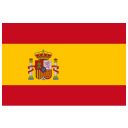The Art of Mandala Tattoos: Symbolism and Spiritual Significance
Geposted von PAUL PARK am

As a writer with a deep appreciation for tattoo art, I am captivated by the intricate beauty of mandala tattoos. These mesmerizing designs have gained popularity in recent years for their aesthetic appeal and profound spiritual symbolism.
In this article, we will explore the art of mandala tattoos, delving into their cultural origins, symbolic meanings, and the creative possibilities they offer for tattoo artists.
Mandalas, derived from the Sanskrit word meaning "circle," hold significant cultural and spiritual value in various traditions, including Hinduism, Buddhism, and Native American cultures. With origins dating back thousands of years, these circular designs have been used as a form of meditation, spiritual practice, and symbolic representation.

Mandalas are rich in symbolism, representing the interconnectedness of life, unity, balance, and harmony. The circular shape embodies the concept of wholeness and the cyclical nature of existence. The symmetrical patterns and geometric precision found in mandalas evoke a sense of balance and harmony. They invite a feeling of peace and serenity, reminding us to seek equilibrium in our lives.
Mandalas are also seen as a visual representation of the spiritual journey and self-discovery. They serve as a guide for meditation, contemplation, and mindfulness practices, allowing individuals to connect with their inner selves and the universe. The intricate patterns radiating from the center symbolize personal transformation and growth, representing the expansion of consciousness and the journey towards enlightenment or self-realization.

As a tattoo artist, working with mandala designs offers endless creative possibilities. Consider the placement of the tattoo, adapting the design to fit various body parts proportionately. Collaborate closely with your clients to incorporate specific symbols, elements, or colors that hold personal significance for them.
Creating mandala tattoos requires precision, attention to detail, and a keen eye for symmetry. Take your time to ensure clean lines, precise circles, and consistent spacing. Utilize shading techniques to add depth and dimension to the design, paying attention to the interplay of light and shadow.
When selecting the color palette for a mandala tattoo, consider your client's preferences and the overall aesthetic they desire. Opt for a harmonious combination of colors that complements the design and conveys the intended mood or symbolism.
Open and clear communication with your clients is essential. Engage in thorough consultations to understand their vision, symbolism preferences, and any specific elements they wish to incorporate. By collaborating closely with your clients, you can create a customized mandala tattoo that aligns with their expectations and carries deep personal meaning.
Embrace the art of mandala tattoos as an opportunity to create meaningful and visually striking designs. Respect the cultural origins and significance of mandalas while infusing your own artistic style and technical expertise. Through your skillful execution, you can offer clients a permanent and profound symbol of balance, harmony, and inner transformation.

The History of Mandala Tattoos
Mandalas have a rich history dating back centuries. They originated in various cultural and spiritual traditions around the world. While their exact origins are challenging to trace, they can be found in ancient Hindu and Buddhist scriptures, Native American cultures, and even early Christian art.
Timeline of Mandala Tattoos
Ancient Origins: Mandalas have been used in spiritual practices for thousands of years. In Hinduism and Buddhism, they were used as visual aids for meditation and to represent the universe's cosmic order.
Medieval and Renaissance Period: Mandalas gained popularity in religious art during this period, appearing in illuminated manuscripts and cathedral stained glass windows.
1960s and Beyond: The influence of Eastern philosophies and the rise of the counterculture movement in the West brought mandalas into the mainstream. They became symbols of spiritual exploration, self-discovery, and personal transformation.
Historical References: Throughout history, mandalas have been depicted in various forms, including intricate paintings, sculptures, and architectural designs. Notable historical references include the sand mandalas created by Tibetan Buddhist monks, the mandalas found in ancient Hindu temples, and the geometric patterns used in Native American sand paintings.
Types of Tattoo Inks Used in Mandala Tattoos
Tattoo inks play a crucial role in bringing mandala tattoos to life. The choice of ink colors can enhance the overall aesthetic and symbolism of the design. Here are some commonly used tattoo inks for mandala tattoos:
Black Ink: Black ink is a staple in mandala tattoos, used to create bold outlines, define intricate patterns, and add depth to the design.
Color Inks: Vibrant colors are often incorporated into mandala tattoos to symbolize different elements and evoke specific emotions. Colors like red, blue, green, and yellow can be used to enhance specific aspects of the mandala design.
Watercolor Inks: Watercolor-style mandala tattoos have gained popularity in recent years. Watercolor inks offer a translucent effect and allow for a more fluid interpretation of mandala designs, creating a captivating fusion of traditional and contemporary aesthetics.
UV/Blacklight Inks: Some tattoo artists use UV or blacklight inks to add an element of surprise and mystique to mandala tattoos. These inks remain invisible under normal lighting conditions but glow under ultraviolet or blacklight, adding a unique and captivating aspect to the design.
References to Modern Tattoo Artists
Several talented tattoo artists have made a name for themselves by mastering the art of mandala tattoos. Their works showcase the beauty and intricacy of mandala designs in various styles. Here are a few notable artists:
Hannah Flowers: Known for her exquisite dotwork mandala tattoos, Hannah Flowers creates stunning designs that incorporate precise dot patterns to form intricate mandalas.
David Garcia: With a specialization in black and gray mandala tattoos, David Garcia's work showcases exceptional shading and detail, bringing depth and dimension to his designs.
Maya Santana: Maya Santana is recognized for her vibrant and colorful mandala tattoos. Her use of bold colors and intricate linework creates visually striking mandala designs.
Ryan Jenkins: Ryan Jenkins is celebrated for his geometric mandala tattoos. His precise lines and intricate patterns result in mesmerizing designs that embrace the symmetrical beauty of mandalas.
By exploring the history, understanding the types of inks used, and drawing inspiration from the works of modern tattoo artists, you can further immerse yourself in the art of mandala tattoos.
Embrace the spiritual symbolism, refine your technique, and let your creativity flow as you create captivating and meaningful mandala tattoos for your clients.
For more information on our TATTOO INK sets, please take a look at our piece on Xtreme Inks: Artist Collections.
Other Articles:
7 Signs You're Incredibly Intelligent
Will Tattoos be Hanging in Museums Someday?
Traditional Black Japanese Sumi Tattoo Ink
Stick and Poke Tattoos: What Inks Work Best
The Role of Tattoo Artists in Preserving and Reviving Traditional Hand-Poked Tattoo Techniques
A Tribal Tattooing Case Study: Expressing Heritage and Pride through Ink
Understanding the Cultural Significance of Tribal Tattoo Designs
The Significance of Black Tattoo Ink in Traditional and Contemporary Tattooing

Mandala conceptual art
TAGS:








